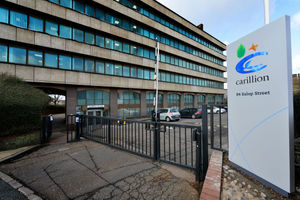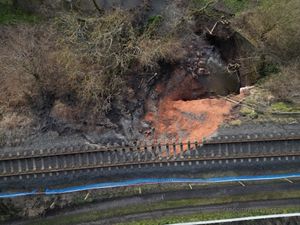Carillion collapse drove 20pc surge in building firm insolvencies
The collapse of building giant Carillion drove a 20 per cent spike in the number of other construction companies going bust, new figures reveal.
The second biggest builder in the UK, Wolverhampton-based Carillion went into liquidation in January, bringing construction projects across the UK to a halt.
Between the end of 2017 and March of this year, the group's failure pushed up the number of other insolvencies across the construction sector by a fifth.
In total 2,764 construction firms entered insolvency in the 12 months to the end of March, a six per cent jump in just a year from 2,608 in 2016/17, says accountancy firm Moore Stephens.

Its research uncovered the significant rise in insolvencies follows Carillion’s liquidation in January, which caused knock-on effects for the whole construction supply chain surrounding what was the UK’s second-biggest construction company.
Moore Stephens says that 780 construction companies fell into insolvency following Carillion’s collapse in the first quarter of 2018, up 20 per cent from 652 in the fourth quarter of 2017.
Lee Causer, a partner at Moore Stephens, said: “The collapse of Carillion sent shockwaves through the construction sector, and we are seeing more insolvencies as a direct result.”
“Large construction companies are infamous for squeezing the profit margins of the contractors and subcontractors who work for them. These contractors often cannot negotiate against the terms set for them by their larger clients.”
“SMEs and specialist subcontractors have been hit particularly hard by Carillion’s fall, as many of them will have relied on the giant for significant amounts of their work. It is also likely that these subcontractors would have had to write off virtually everything owed to them by Carillion.”
“Payment delays should not be allowed to become any worse for construction companies. High import costs and rising costs of materials, added to the huge disruption caused by Carillion are also exacerbating the difficult climate currently being experienced by the construction sector.”
Carillion was involved in large-scale projects across the UK and internationally, including military bases, hospitals and road and rail projects. Following its liquidation, thousands of its subcontractors lost significant amounts of work and were left with a substantial bad debt, significantly depleting cash reserves and making insolvency unavoidable for many operating in the sector.
Moore Stephens says the thin profit margins in the construction sector are aggravated by "endemic" late payment problems and bad debts increasing. Carillion’s payment terms allowed 120 days to pay suppliers, with an ‘early payment facility’ that allowed suppliers faster payments if they would accept less than the full amount owed.
Carillion's accounting and payment practices came in for fierce criticism during a Parliamentary inquiry that saw directors lambasted for the way they had run the business.
Of the 19,000 people working for Carillion in the UK, nearly 2,800 lost their jobs including nearly 400 at the company's city centre headquarters in Wolverhampton, where just 80 are left working with accountants PwC on the winding up of the business.
New companies had to be found to take over more than 400 Government contracts handled by Carillion, while work on the Midlands Metropolitan Hospital and the Royal Liverpool Hospital both stopped. The Government has now stepped in to pay for both hospitals to be completed by new contractors.





